Cooking up Amazing Trips contains affiliate links. If you purchase through these links, I may earn a commission at no extra cost to you. See my Disclosure Policy for more information. Thanks for supporting my blog!
How to Prepare Your Luggage
Have you ever gone on a trip and forgotten essential things? Don’t worry; with my tips on preparing your luggage, you will pack a perfect suitcase in which you will not miss anything.
Steps to Follow to Prepare the Luggage
Step 1 — Baggage Allowance
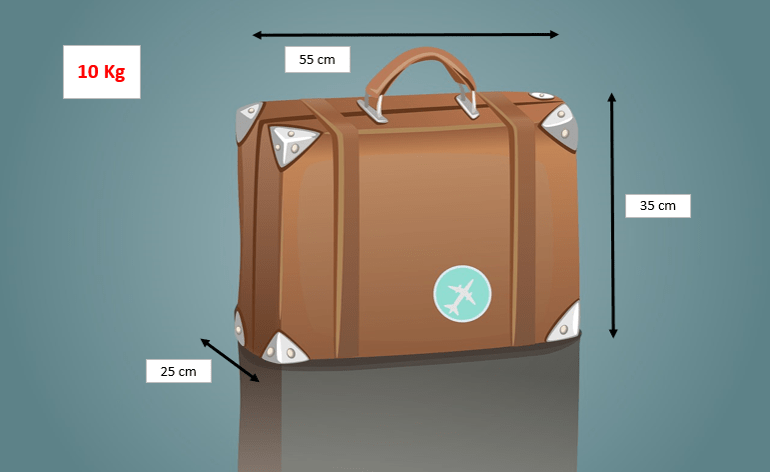
The first step to preparing your luggage is determining your baggage allowance based on weight and size. If you travel by public transportation, check with the company for any limitations.
Example: If you travel with only hand luggage on a plane, you must be more selective with what you bring than if you check in a 20 kg suitcase.
Your carry-on luggage allowance and size requirements depend on the airline you’re flying with.
Here is a table with the baggage allowances included in the basic fare for leading European airlines:
*Most basic fare. Most companies offer to enhance these allowances by paying an additional fee.
When the airline permits only one carry-on bag that must be placed under the front seat, paying for an additional carry-on bag is usually an option.
Step 2 — Choose the suitcase
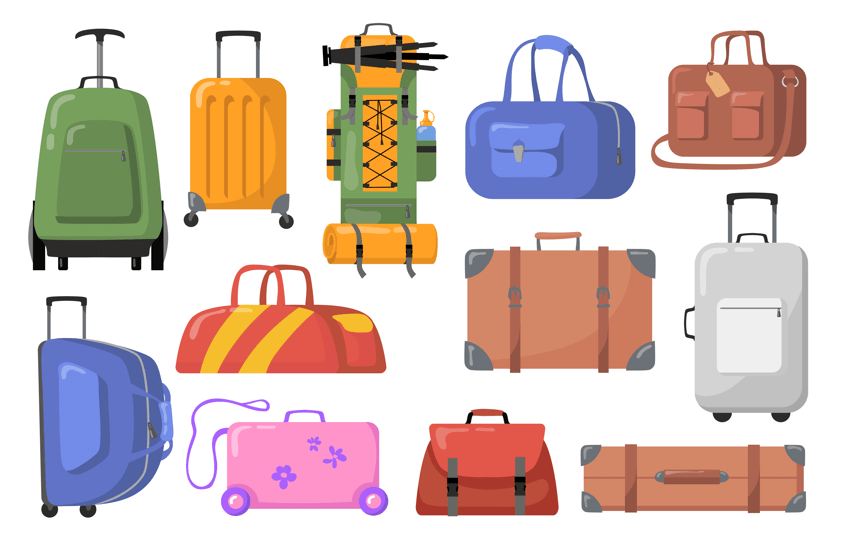
Choose the suitcase or bag(s) you will carry based on your preferences and the information obtained in the previous step. Knowing the capacity of your luggage will aid in the preparation process.
There is a widely debated topic about which type of suitcase is better for travelling — Backpack or suitcase, hard or soft, two or four wheels, etc. I’m planning to write an article on this subject, but in the meantime, I suggest taking the suitcase that best suits your travel needs from the options you already have at home.
Step 3 — The Weather Forecast

We understand that travelling to Finland differs from going to the Caribbean or visiting Italy in January versus August. However, due to climate change, the weather has become unpredictable.
We should check the weather forecasts for the places we plan to visit, as it will help us to prepare the appropriate clothing and footwear based on the expected climate and temperatures.
Here, I leave you the links to my two favourite pages to check the weather:
Step 4 — The List

Create a list of everything you need. Do this a few days before your travel date so that you have time to remember anything you might have forgotten.
When preparing it, take into account the following factors:
- The number of days you will be travelling.
- Will you have the opportunity to wash any clothes?
For example, If you’re going on a 10-day trip without access to laundry, you will want to take at least ten pairs of socks.
- The types of activities you plan to do on your itinerary. For instance, if you intend to go to the beach, you must pack a swimsuit; if you plan to go trekking, you must take mountain boots.
Considering all of the above, I would classify the items into five categories:
1. Clothes and Shoes
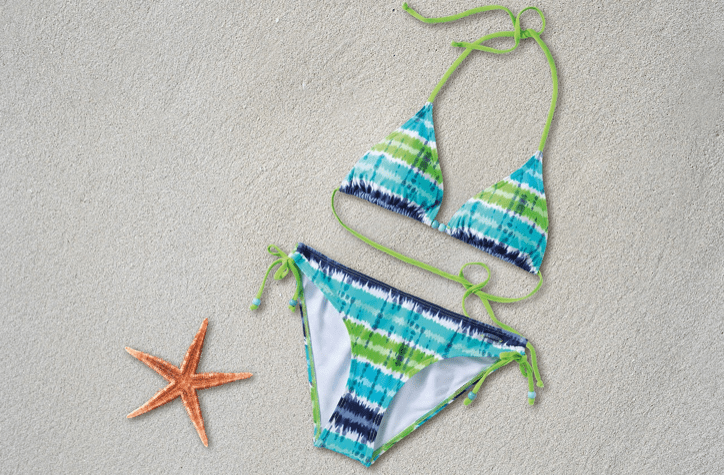
In addition to the three previous factors, consider the climate and weather forecast during your trip.
- Try to choose clothes and footwear that can be easily combined to save space and the lightest items so that the suitcase weighs little. Don’t pick that dress that requires specific shoes that you won’t be able to match with anything else. This will help you pack efficiently and make mixing and matching your outfits easier while on your trip.
- Depending on your available space, you can add some ‘just in case’, but only a few! Leave some room for possible purchases at the destination.
2. Toiletries

This is a very personal matter since we all use different products daily. Mentally review your routine for these products to avoid forgetting anything.
If you’re travelling by plane, read the ‘Tips on Luggage if You Travel by Plane’ section (later in this article) for specific advice on toiletry bags for flights.
3. Travel First Aid Kit
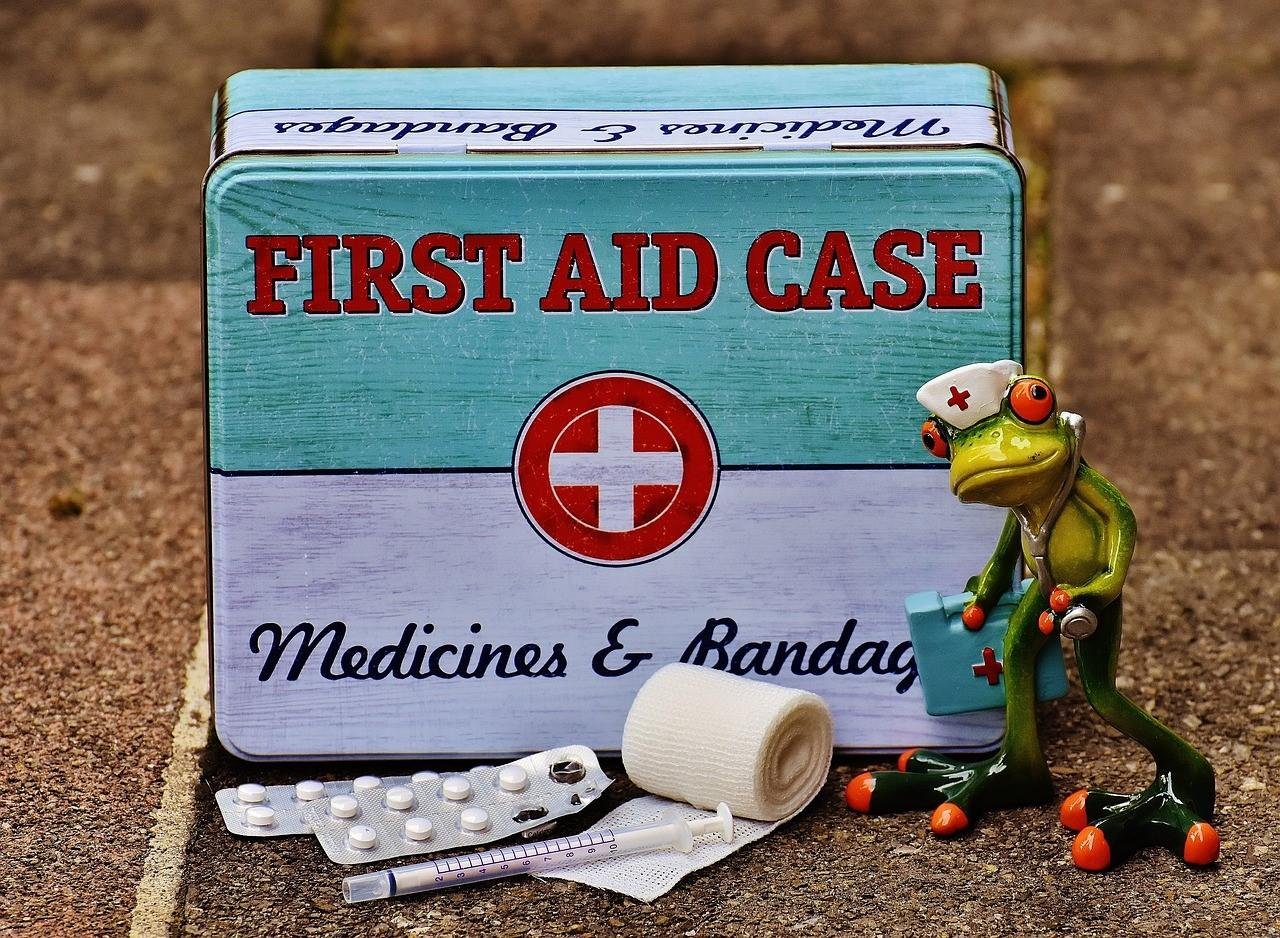
One essential item that should never be missed in our luggage is the first aid kit.
I always recommend carrying at least a basic first aid kit. But if it is a “big trip” or an exotic destination you are unfamiliar with, I consider it essential.
Unforeseen events such as a cold, an injury, or food poisoning can happen anywhere, anytime. It’s best to be prepared so they don’t ruin your holiday.
My post, Travel First Aid Kit, provides detailed preparation instructions.
4. Electronic Devices

I mean all those electrical or electronic items you usually use, such as a tablet, e-book, laptop, camera, headphones, digital watch, etc. I’m not mentioning the mobile phone because I know you won’t forget it. 😂
Remember to pack chargers and a travel adapter for all your devices, if necessary.
If you want to know if you will need an adapter, consult my article on Plug Types by Country.
Remember that if you travel by plane, all these items must go in your hand luggage.
5. Miscellaneous
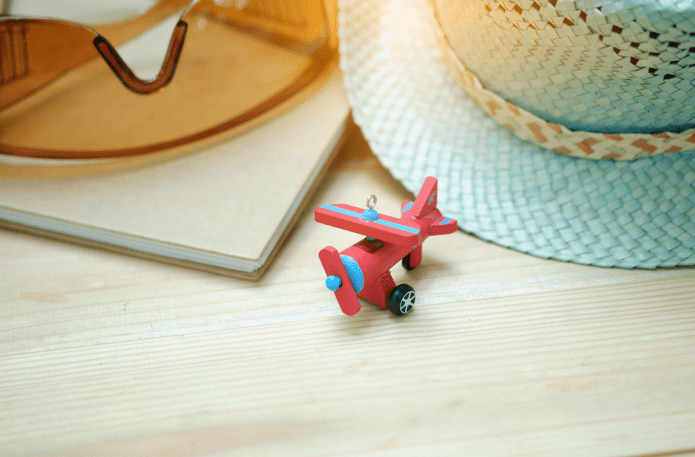
Other ‘miscellaneous things’ that should be included in your luggage are:
- Sunglasses.
- Cap or hat for the sun (it will depend on the destination).
- Spare glasses (if you use glasses or contact lenses).
- Eye drops.
- Earplugs. You never know when you’ll need them.
- One empty bag is for dirty clothes, and another is for possible unforeseen events.
- A towel. Make sure it’s a microfiber towel, as regular towels are bulky, heavy, and take a long time to dry.
- A lock. Carry a small combination lock with you. They are helpful, especially if you stay in hostels.
- A fully charged portable battery. It can be handy throughout your trip, mainly if you use your cell phone often.
- A book.
Include any other items that are essential for you. For example, when I go to the beach, I can’t miss a deck of cards! 😜.
Step 5 — The Packing
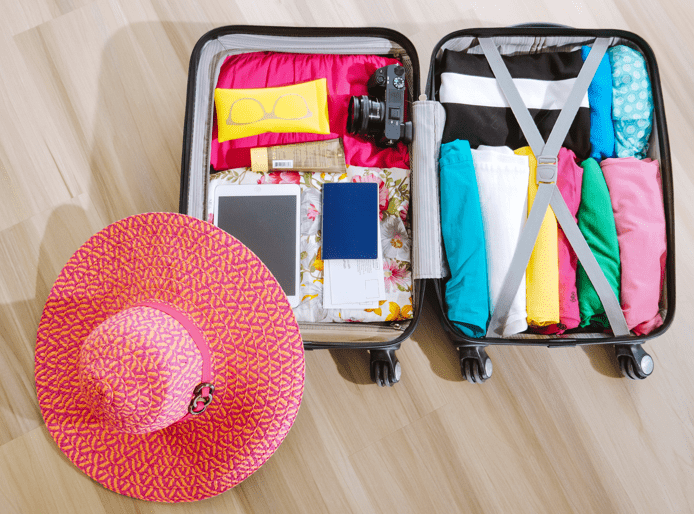
You already know everything you need to pack, so it’s time to start packing.
It’s best to start a few days before your trip and pack everything you won’t need before then. This will make the process more effortless in the end. Since you have a list of everything you’ll take, you only need to add what’s missing the day before your trip.
Some tips on how to organise it:
*️⃣ Place heavier items on the bottom and more wrinkle-prone clothes on top.
*️⃣. Make the most of the little spaces available to store small things.
*️⃣ The most effective way to save space and prevent wrinkles in your clothes is by rolling them into a tube shape. I know it may sound strange and may take some practice, but believe me, it works!
*️⃣ It’s best to store footwear in individual bags to optimise the use of space.
*️⃣ After completing it, check the weight to ensure it falls within the permitted limit.
Tips on Luggage if You Travel by Plane

*️⃣ For more space in your carry-on bag and to possibly avoid additional charges, wear bulkier clothing and shoes during your flight.
*️⃣ If you check your luggage, pack spare clothes in your carry-on bag. Include a change of underwear and clothes that can be easily folded into a small space to use for a couple of days in case your suitcase is lost.
A toothbrush and some deodorant take up little space, but they can be life-saving in certain situations.
Toiletries
Hand Luggage
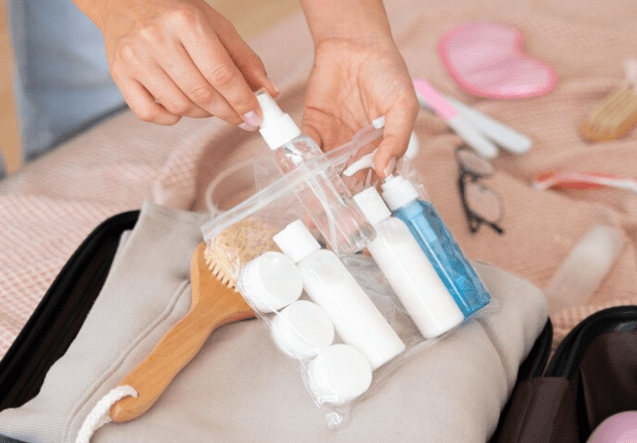
*️⃣ The maximum volume allowed per bottle is 100 ml, and the total volume should not exceed 1 litre. Additionally, the bottles must be placed in a transparent bag, not exceeding the size of 20 × 20 cm, and must have an opening and closing system. The level of enforcement may vary depending on the airport.
I have travelled to many airports worldwide, and in my experience, Manchester Airport in the United Kingdom has the most restricted policy regarding these rules. They only allow bags that are precisely 19 × 19 cm in size and won’t accept any other bags, even if they are certified for airport use or are used in other airports worldwide.
I wouldn’t risk not meeting those requirements, as the last thing you want is to arrive at the security checkpoint with all your products and have them thrown in the rubbish because they don’t fit in the mini bag, which must close completely.
*️⃣ When packing creams or makeup, use small refillable bottles to save space instead of carrying the entire jar.
*️⃣ If you find it challenging to fit all your toiletries in the liquid bag when travelling with hand luggage only, you can buy bulky and inexpensive items, such as deodorant, shampoo, body cream, etc., at the airport after passing through security. This can make your travel experience more manageable and less stressful.
Remember that anything purchased at the airport does not count towards baggage allowance limits.
*️⃣ One way to avoid liquid restrictions while travelling is to bring shampoo, conditioner, and deodorant in bar form, as they are not considered liquids.
Checked Luggage
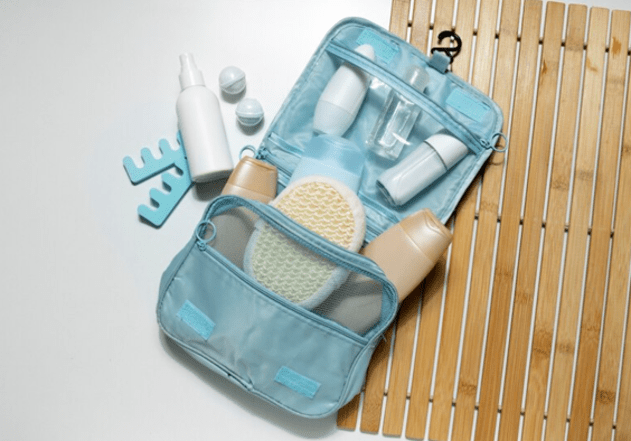
*️⃣ There is no limitation on the volume of the bottles, and there is no requirement to carry them in a specific way, as with carry-on baggage.
*️⃣ I recommend putting the bottles in a plastic bag if you check in. This will prevent any liquid from spilling and damaging the rest of your belongings during the flight. Additionally, it will make cleaning up any spills much easier.
Hand Baggage Restrictions

It’s important to note that there are several restrictions on hand luggage for those who are not used to flying.
Each country may have different requirements, but the following list could serve as a general guideline:
Prohibited items
- Explosive and flammable substances.
- Weapons (including toy, reproduction or imitation weapons that could be confused with real weapons).
- Discharge devices and neutralising gases.
- Sharp objects (large scissors, razors, corkscrews, etc.).
- Chemical or toxic substances.
- Blunt objects (bats, batons, paddles, ski poles, etc.).
- Work tools (hammers, saws, drills, etc.).
Artículos Restringidos
- Animal products, meat, and dairy.
- Vegetables and plant products.
- Alcohol, if it exceeds the maximum amount allowed by the country.
- Tobacco, if it exceeds the maximum amount allowed by the country.
- Lithium cells and batteries.
- Please note that any liquids, gels, and aerosols you carry during air travel must be stored in individual containers no larger than 100 ml. These containers must be packed in a transparent bag with an opening/closing system and no more than one litre capacity.
- However, if you have liquid medications necessary for your travel, they are exempted from these restrictions. Please ensure that you have a prescription with you to avoid any problems.
I hope you liked this post and found it helpful.
Remember to review my article about Travel Documents, which you should always take with you in your hand luggage.
Also, if you have not already done so, check the rest of the travel preparations within Travel Logistics so that you do not forget anything essential and your trip goes smoothly.
If you have any questions or concerns, please don’t hesitate to contact me. You can leave a comment below or fill out the contact form, and I’ll gladly assist you.
Additional Information
You can also check my itineraries in Itineraries. Here, you’ll find them classified in City Guides and Country Guides.
Alternatively, in the section Destinations, they are classified based on the type of trip:
- Amazing Experiences. It covers the most extensive and complete trips.
- Beach and Sea. For those who prefer quieter activities by the sea.
- City Breaks. Short trips with a single destination.
📌 If you prefer to see them separated by continents, check them in Portfolios.
Remember to check Cook up Your Trip. There, you will find everything you need to organise your trip from start to finish.
Ready to Book your Trip?
To help you organise your adventure, I’ve gathered the best tools I use and recommend for booking flights, hotels, local transport and more. These links support this site at no extra cost to you.
🧳 Book Your Trip Here
- ✈️ Flights: Compare the best prices on flights using Kayak.
- 🛏️ Accommodation: Find hotels and unique stays at great prices worldwide with Booking.com.
- 🚐 Transfers: Pre-book your airport or city transfers to avoid stress on arrival with Welcome Pickups.
- 🚗 Car Rentals: Explore destinations at your own pace by using Discover Cars or Auto Europe to compare reliable car rental providers.
- 💺Transport (Bus and Train Tickets): Compare schedules and easily book intercity bus and train travel with Omio.
- 📷 Tours & Activities: Book fun experiences, guided tours, and skip-the-line tickets in advance with GetYourGuide or Viator.
- 🌐 Internet Connection: Stay connected abroad with eSIMS from Airalo.
Safe travels! 🌏✈️



